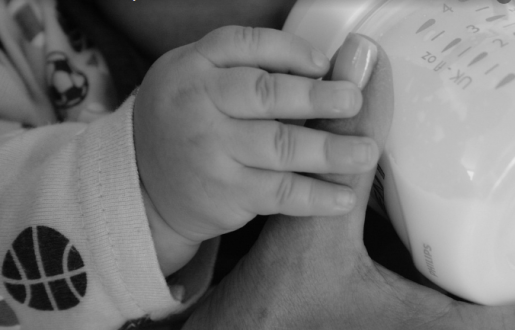Infant feeding for parents with HIV: a decision at the intersection of reproductive justice, ethics and medicine
Parenting is hard. Making any parenting decision is especially hard in our current world with opinions from every side: family, friends, medical providers, even opinions from strangers on social media. Infant feeding decisions, including whether to feed a child breastmilk or formula, are especially complicated for birthparents with HIV.
Approximately 5,000 people with HIV give birth in the United States every year. While there have been huge advancements in prevention of perinatal transmission (for example, mandatory screening during pregnancy in most states), transmission still occurs (84 cases in 2019). Previously, U.S. National Guidelines recommended formula only feeding as it was felt to be acceptable, feasible, affordable, sustainable and safe, and eliminated the risk of perinatal transmission via breastmilk. This is in contrast to WHO recommendations for low-resource settings where exclusive breast/chestfeeding is recommended due to increased neonatal morbidity and mortality in the setting of formula use.
National discussion regarding infant feeding in recent years has been spurred by voices from the community, as well as knowledge that formula may not be quite as acceptable, feasible, affordable, sustainable and safe as previously thought.

While formula may be acceptable to some, many patients with HIV are concerned that not breast/chestfeeding will lead to unintentional disclosure of their status to their community by going against community expectations. Others have breastfed other children, either prior to HIV diagnosis or in a different country, and wish to be able to do the same for their current child. Finally, some have been inundated by “breast is best” marketing information and feel pressure to breast/chestfeed and/or feel that the benefits to their health and baby outweigh any potential risks.
Feasibility, affordability, sustainability and safety of formula have all been challenged recently with issues in the U.S. due to lack of clean drinking water (for example in Flint, Mich., Jackson, Miss., or the recent boil water event in Houston) and significant nationwide formula shortages that disproportionately affect low income families that can’t drive to multiple stores each day in search of formula.
In addition, the perceived risks of breast/chestfeeding for a parent with HIV are variable and widely debated. Evidence-based guidelines are lacking and the best data we have for patients on antiretroviral therapy is that the risk of HIV transmission via breastmilk is low (0.3% in 6 months, 0.6% in 12 months) but not zero, with two transmissions occurring when the most recent viral load was undetectable. Those who have had challenges with maintaining viral suppression are at higher risk of HIV transmission and are advised to formula feed. However, for the right candidate, the chance of transmission is exceedingly low.
Previous work has described the ethical justifiability of discussing breast/chestfeeding with people with HIV given clinicians’ duties of non-maleficence, harm reduction and social and reproductive justice. Further, populations that are disproportionally affected by HIV already experience disparities in adverse maternal and neonatal outcomes (for example, increased risk of obesity, diabetes and breast cancer in Black women and complications of prematurity in infants). Breastmilk has proven benefits for these conditions. Policies that do not allow patient-centered decisions and disallow breast/chestfeeding widen disparities.
In summary, yes, there appear to be (low) risks for parents with HIV to breast/chestfeed. Yes, it is difficult to quantify exactly what those risks are. But it is our job as the healthcare team to educate and help our patients make the best decision for their family. We need to work together, try to answer the unanswered questions and figure out how to safely support our patients minimizing risk while maintaining equitable human healthcare rights.
By Dr. Jennifer McKinney, assistant professor, Department of Obstetrics & Gynecology, Division of Maternal Fetal Medicine, Baylor College of Medicine



